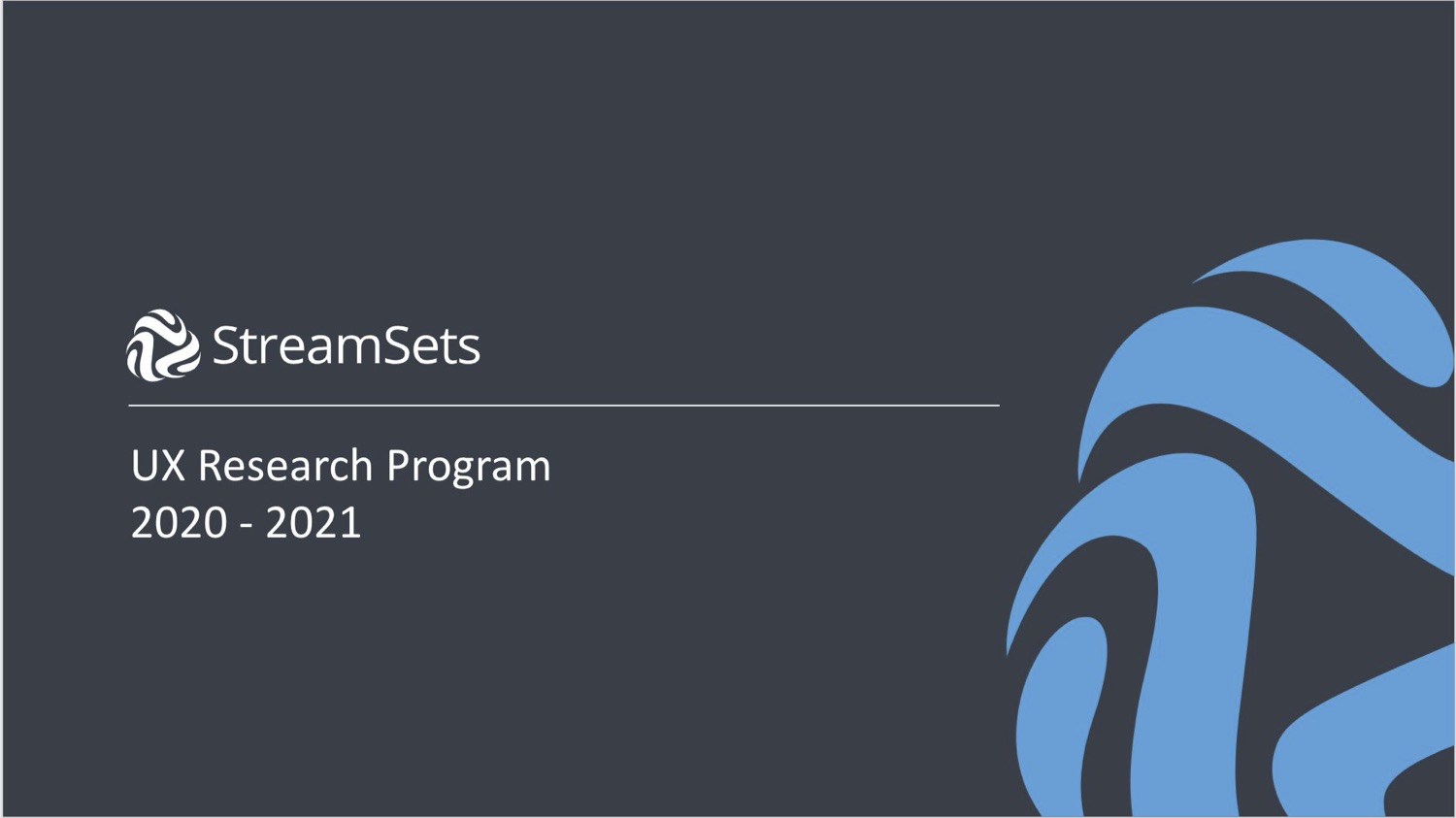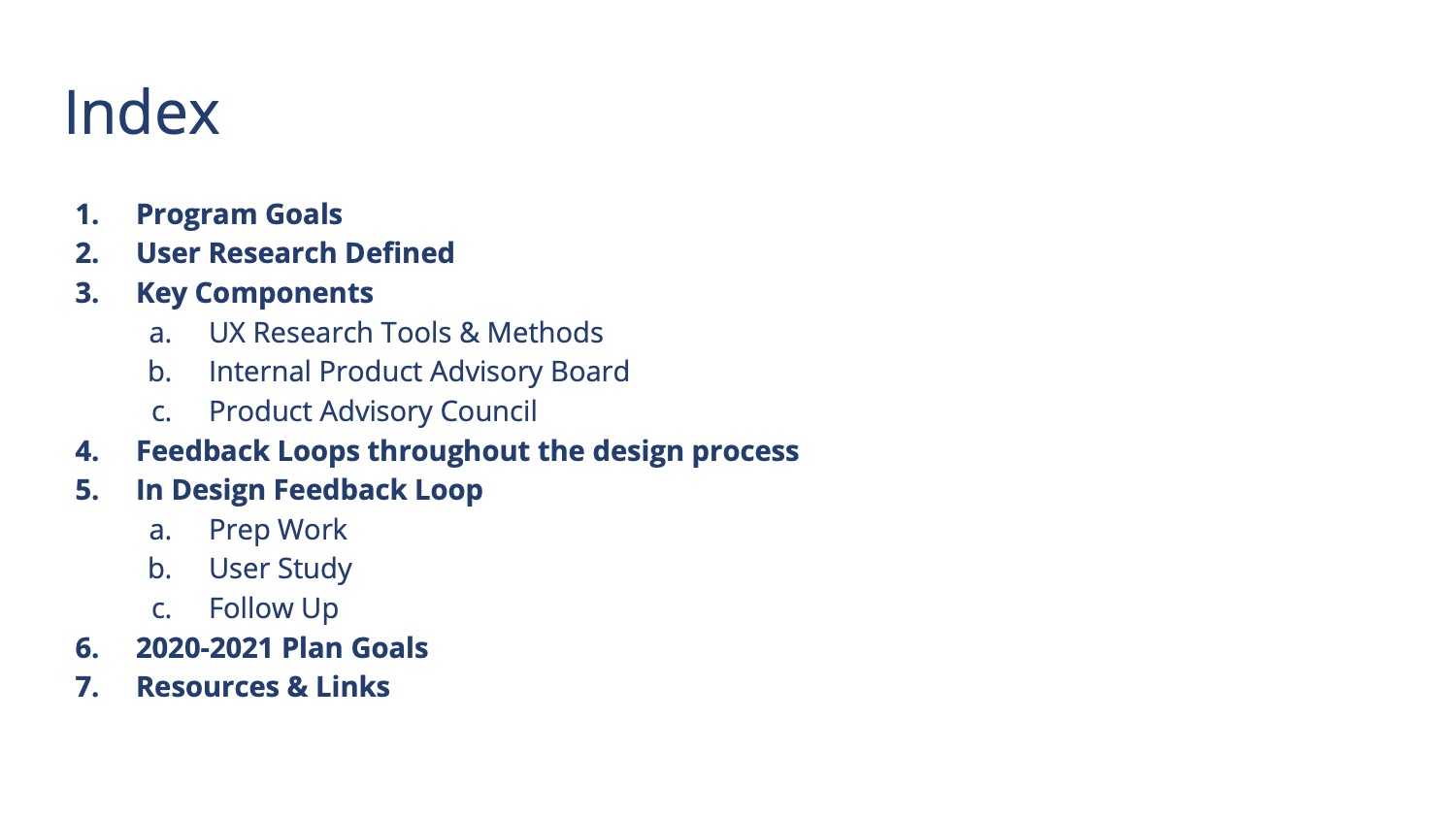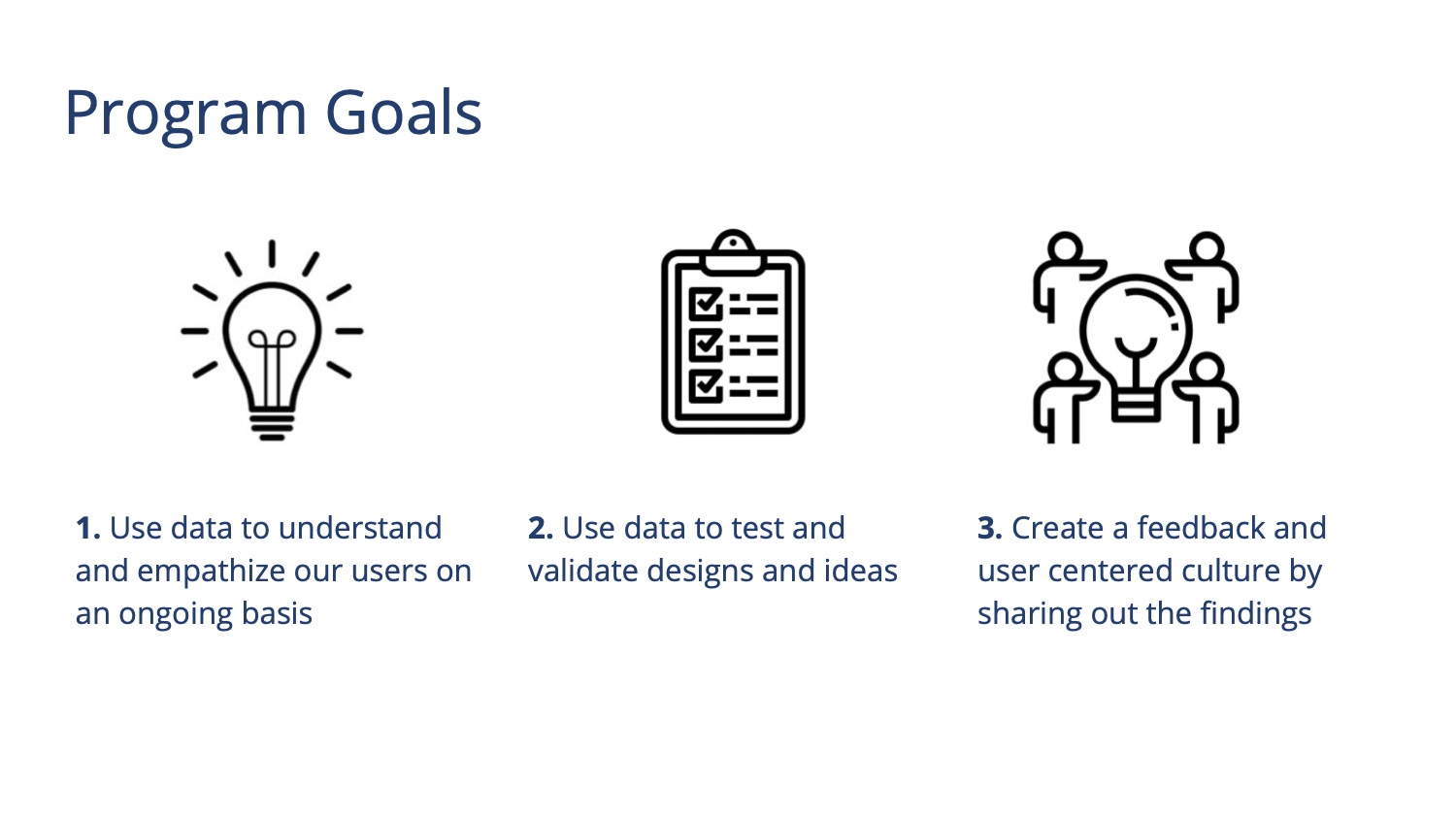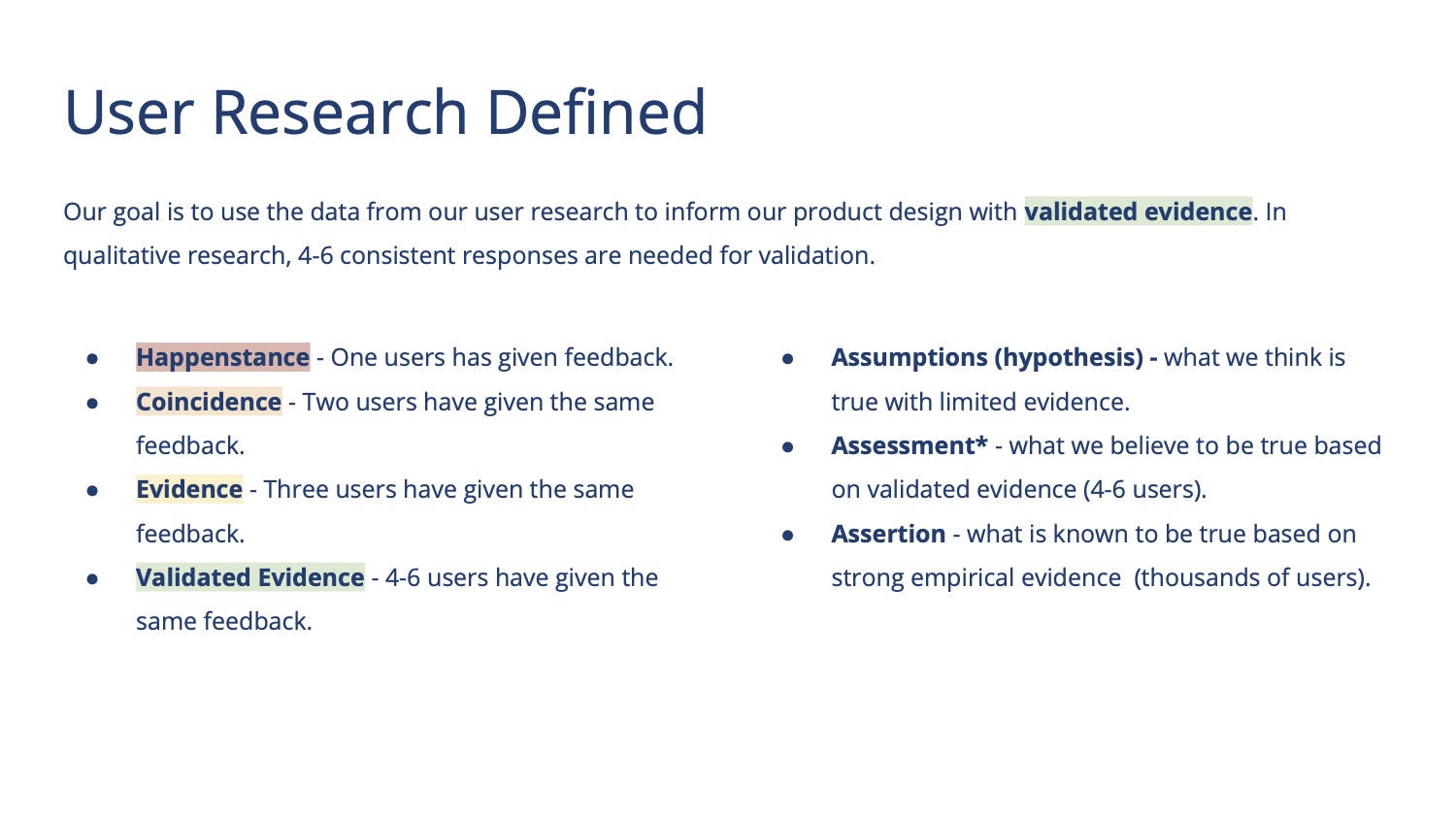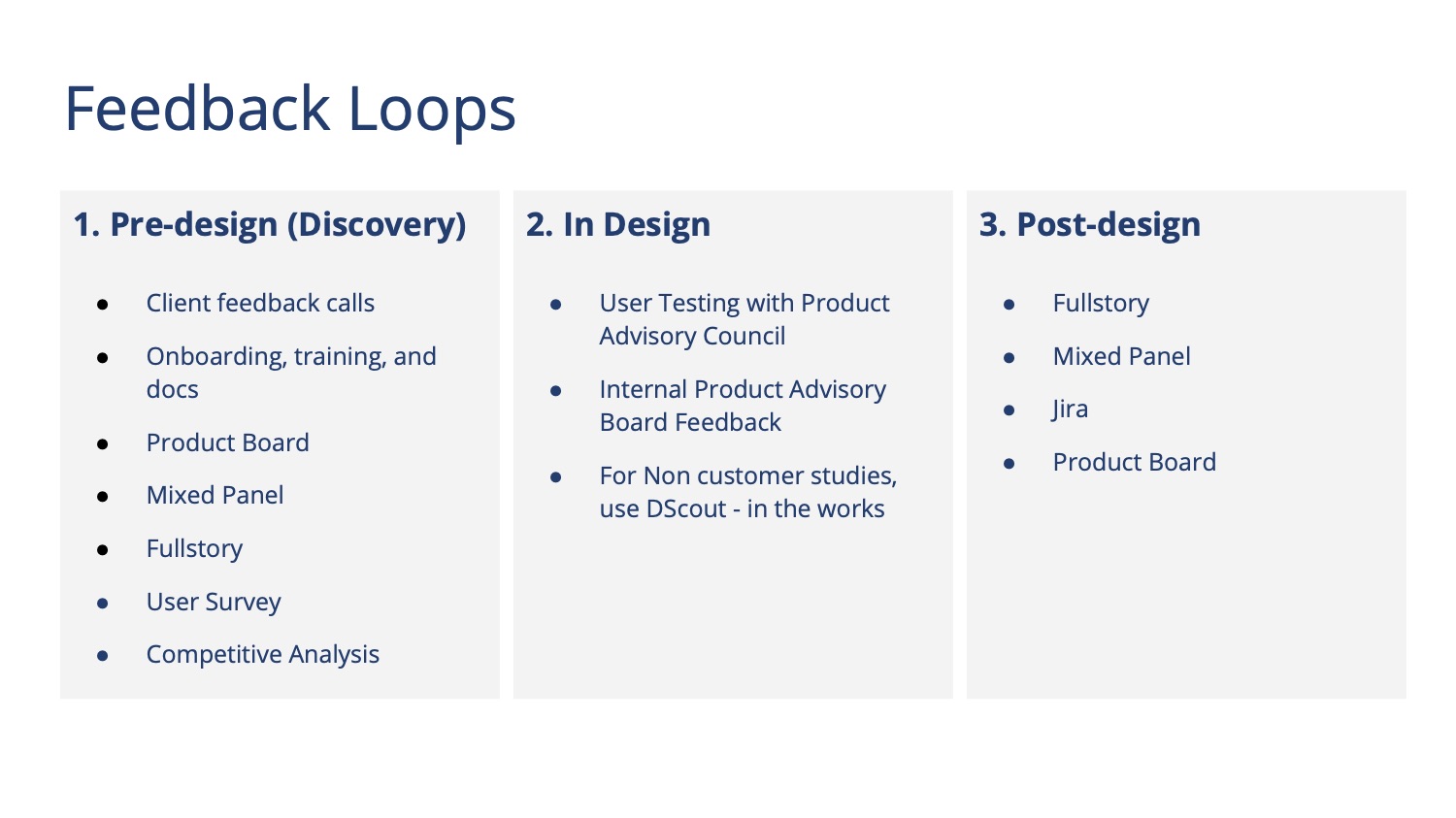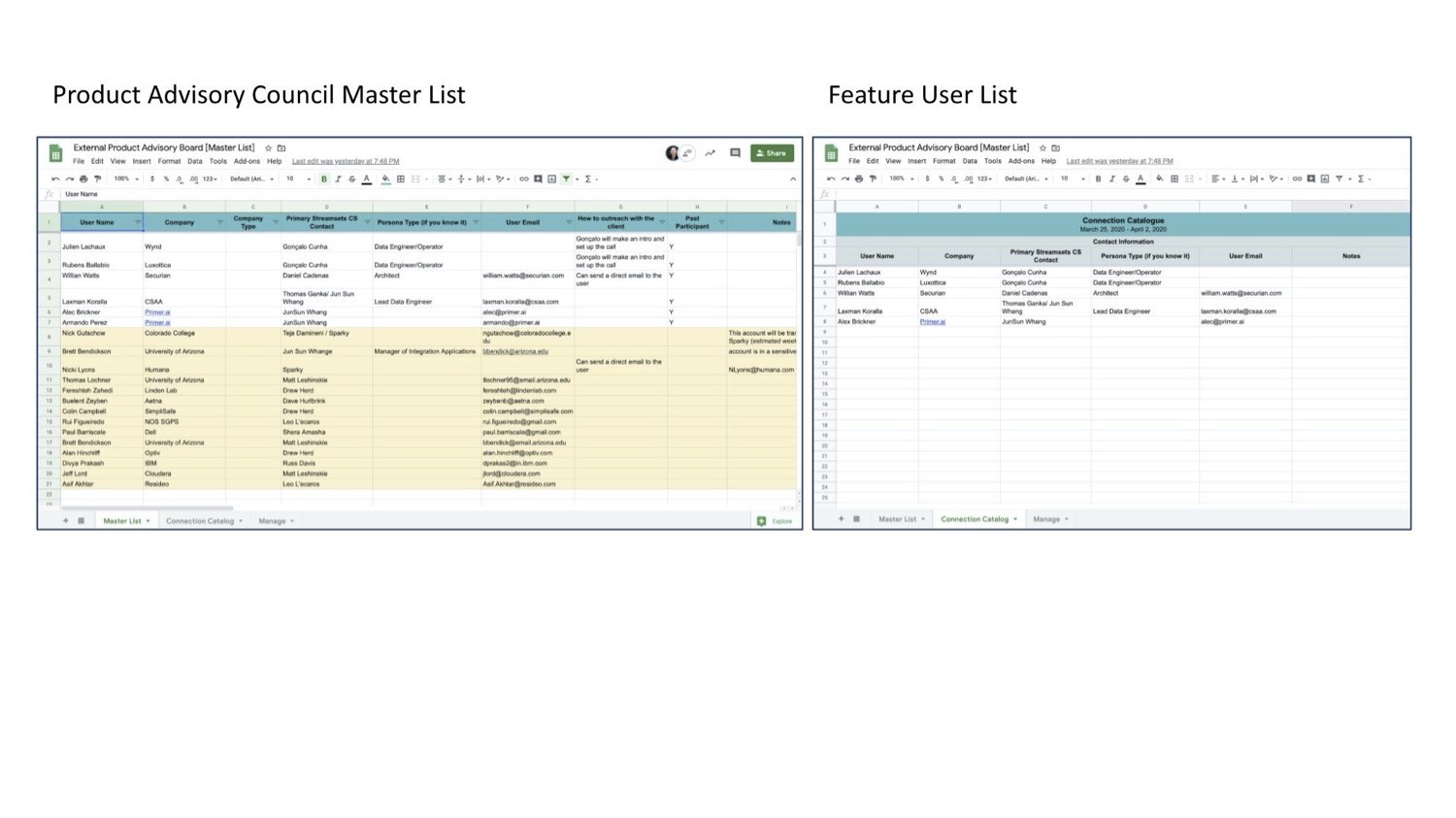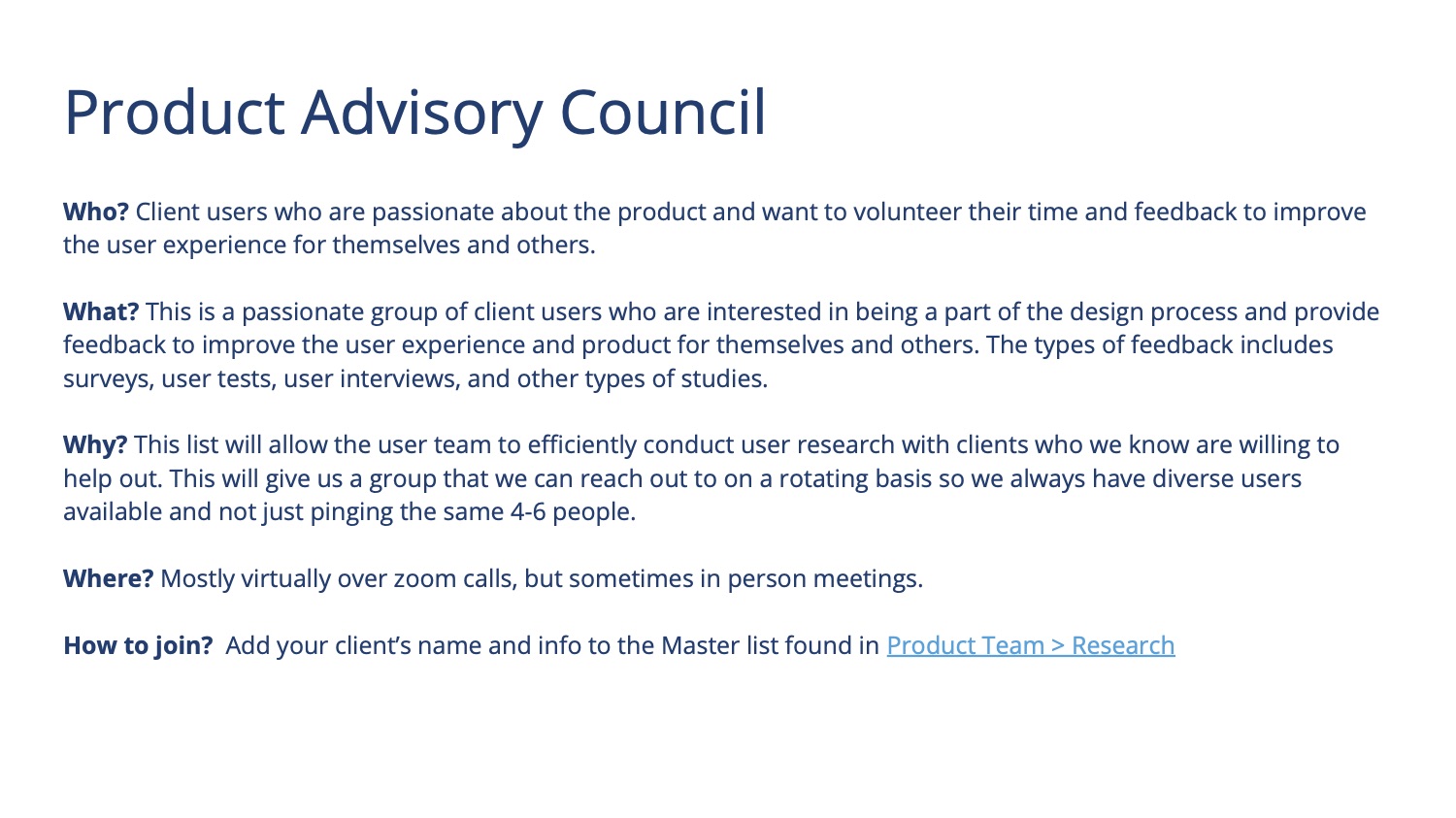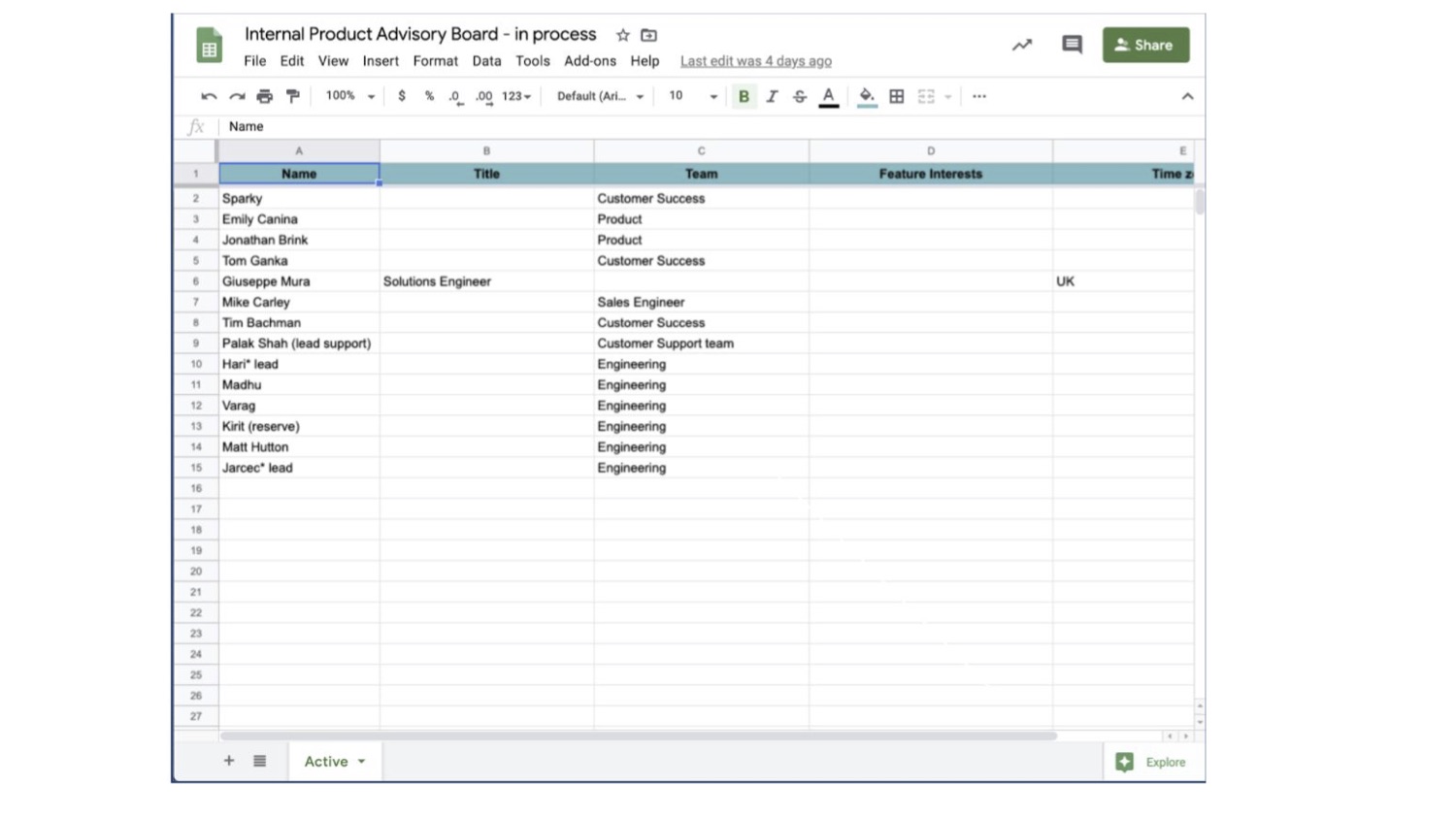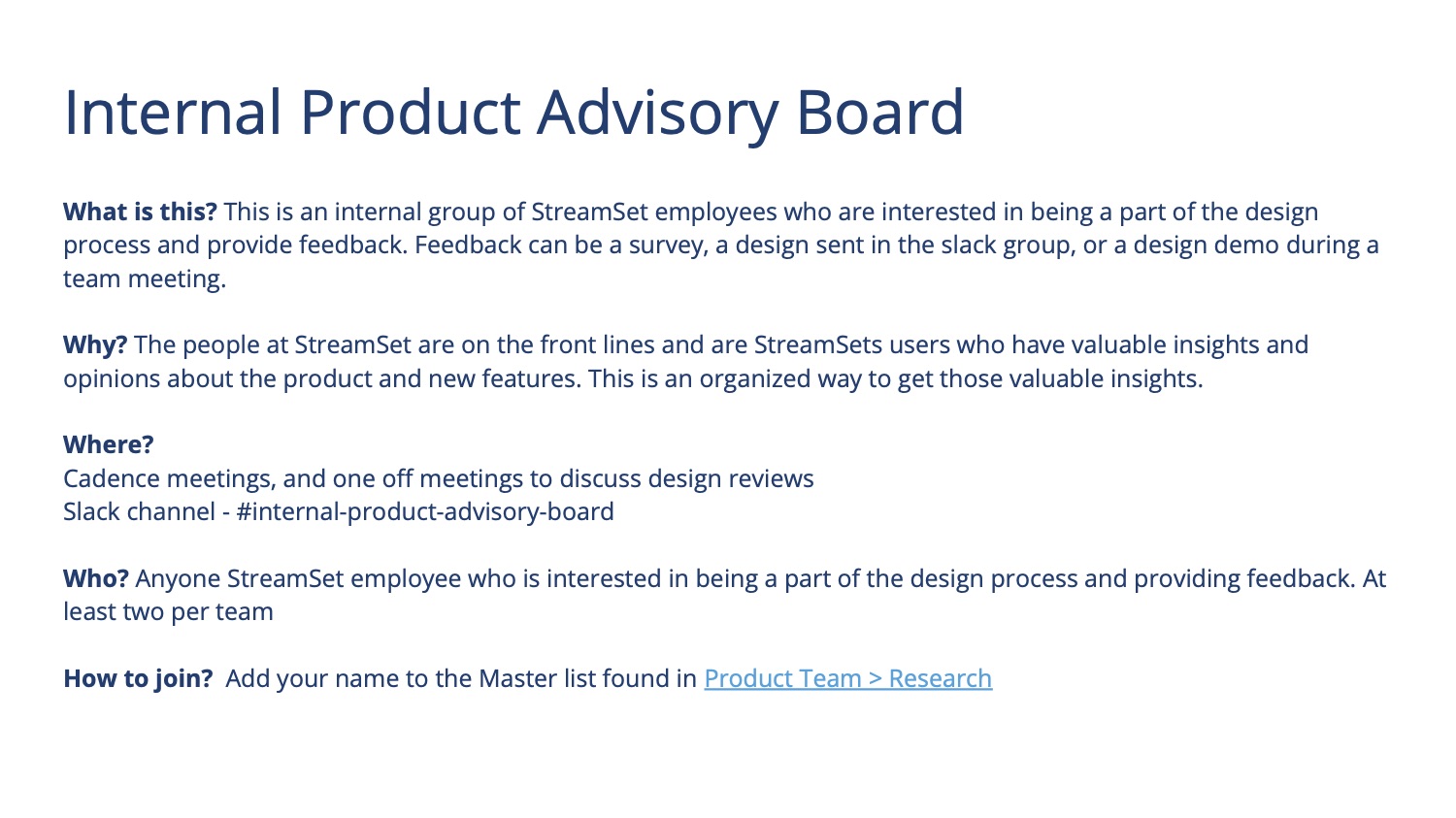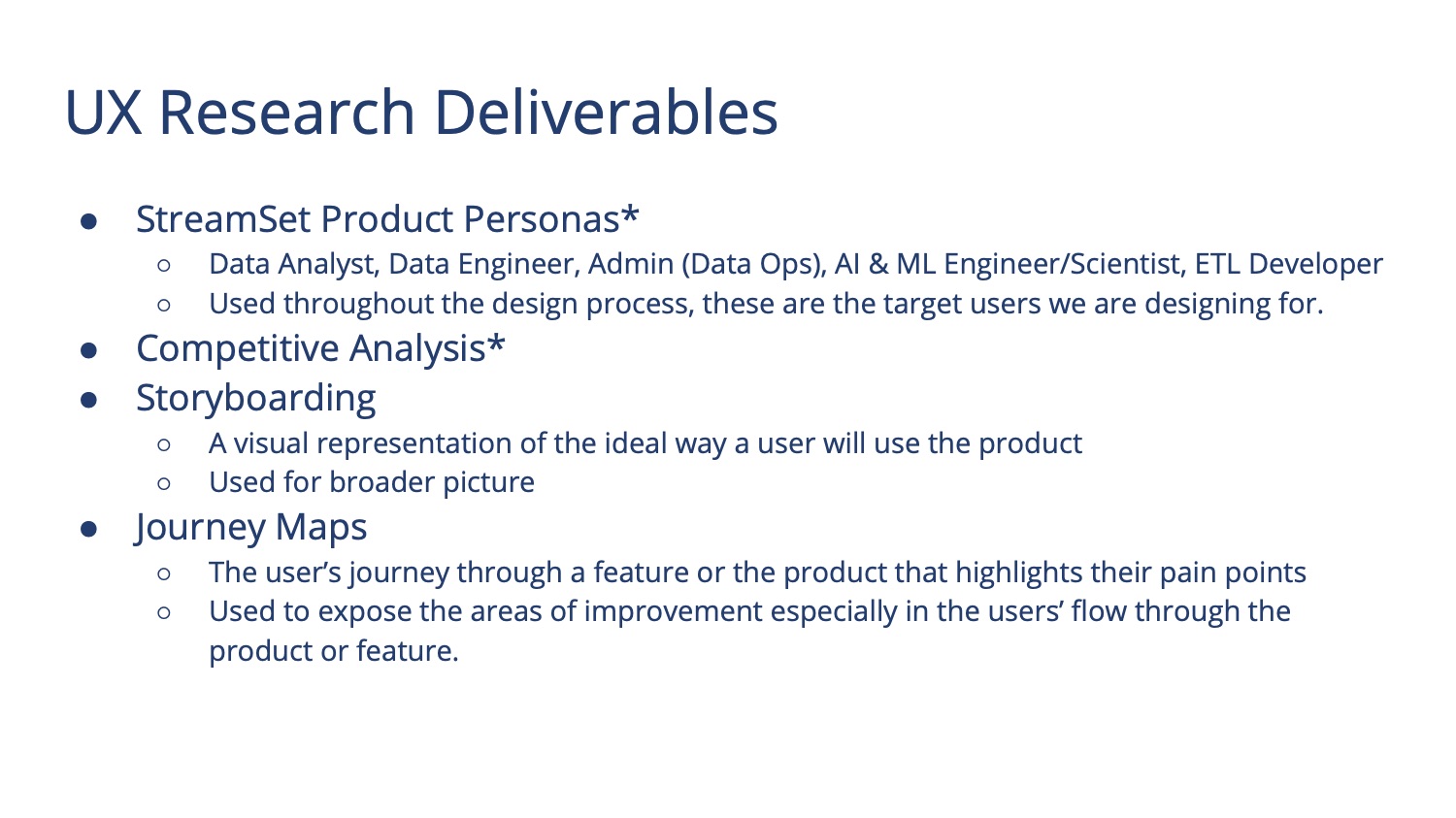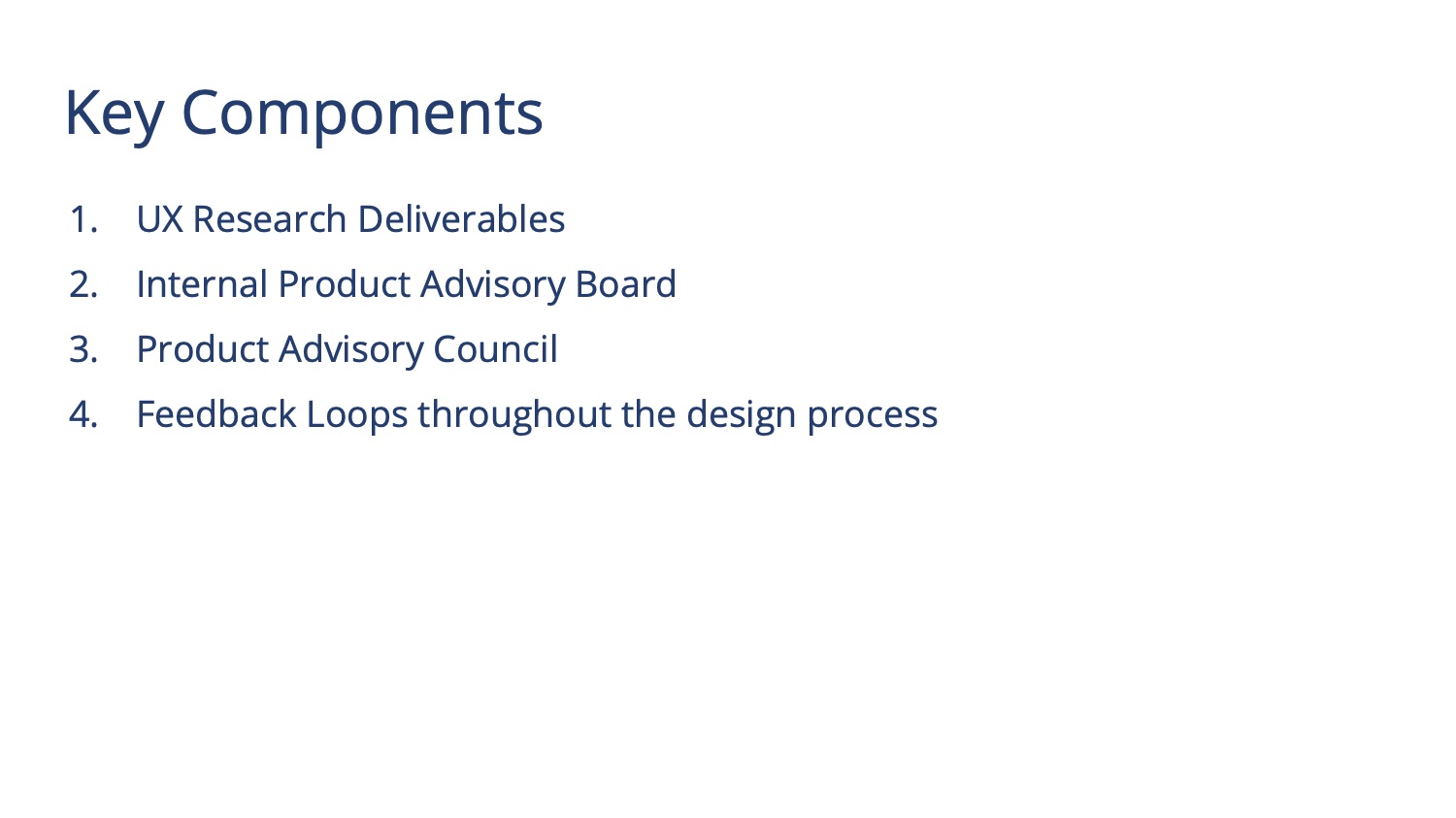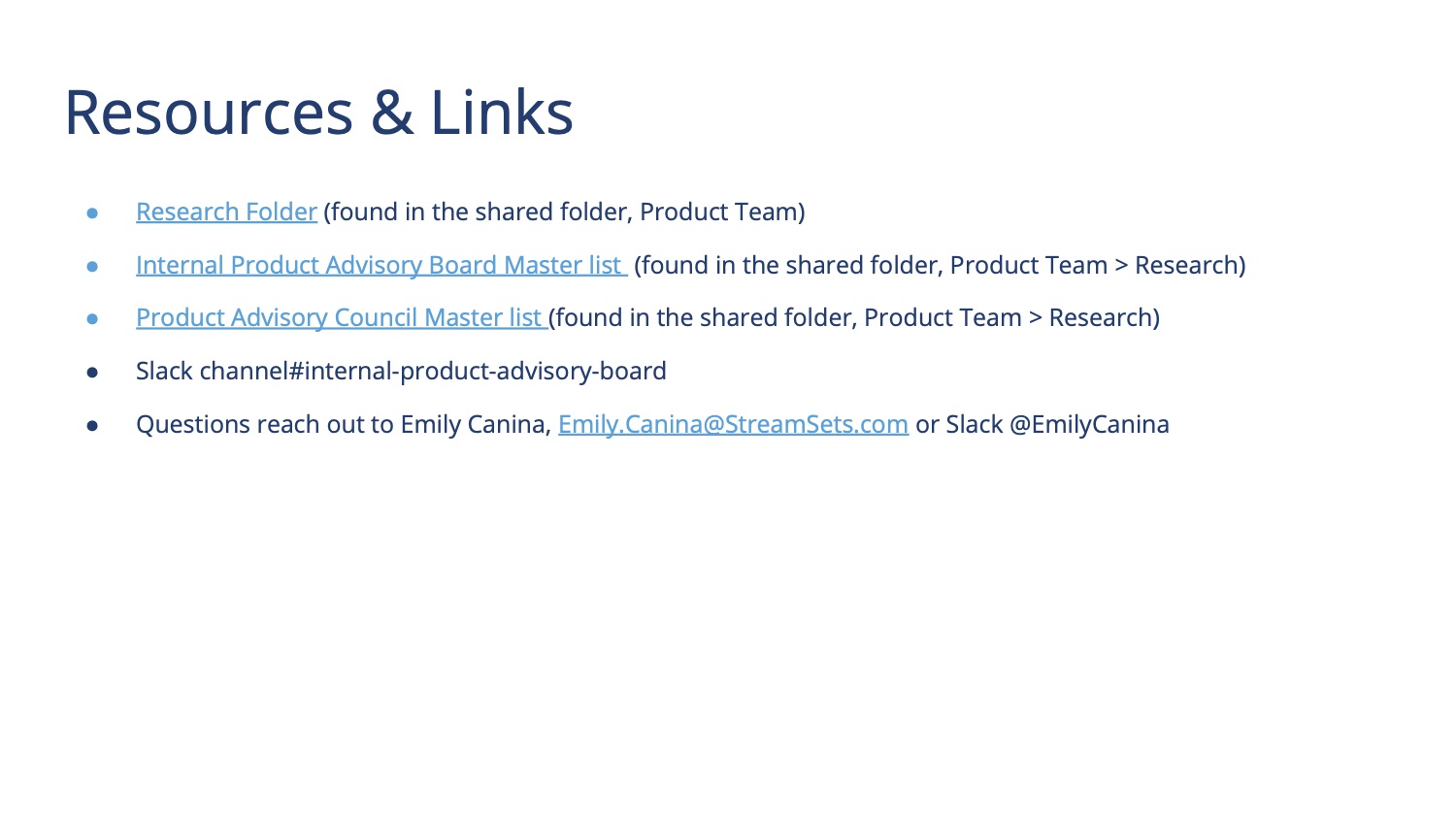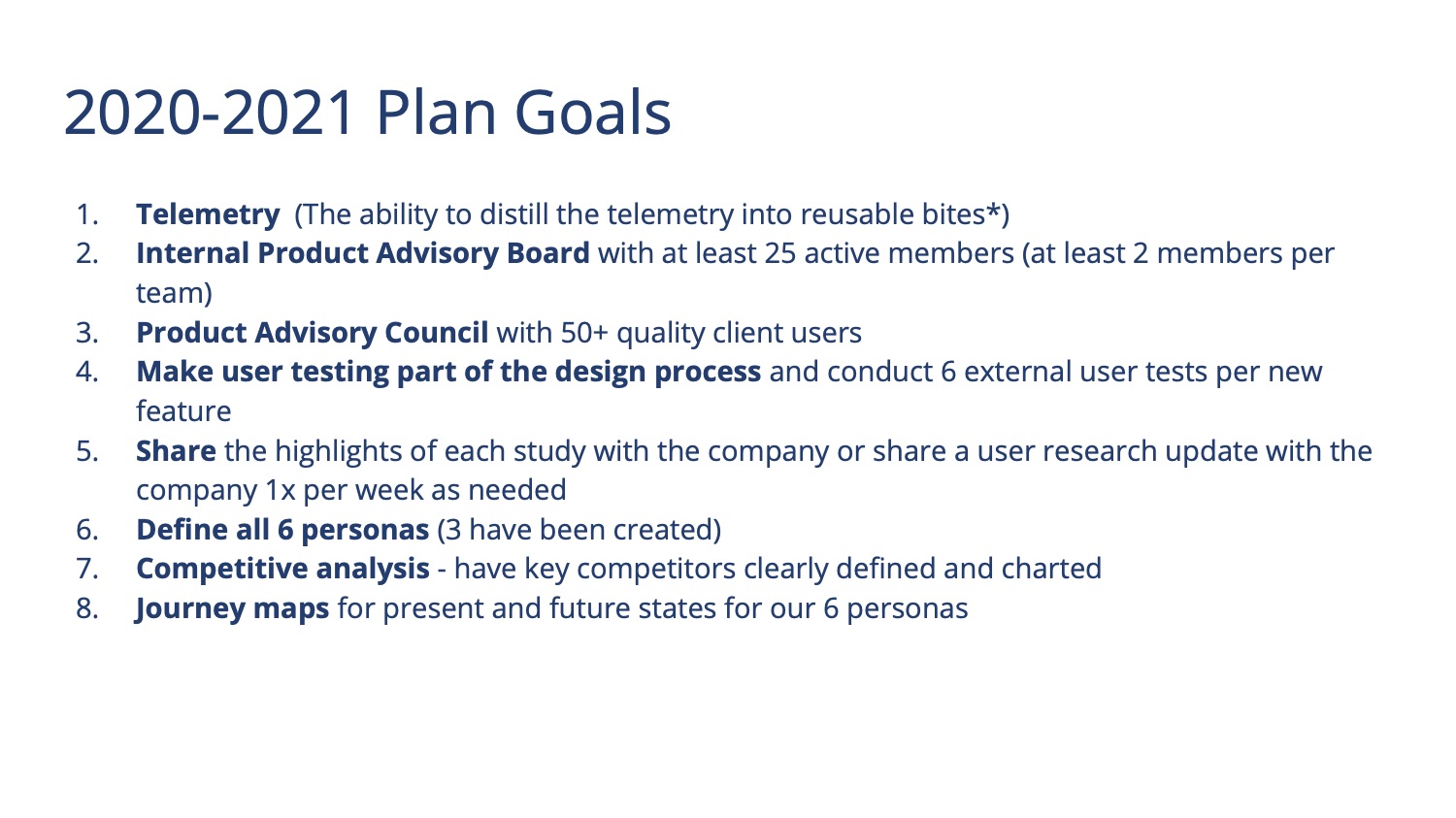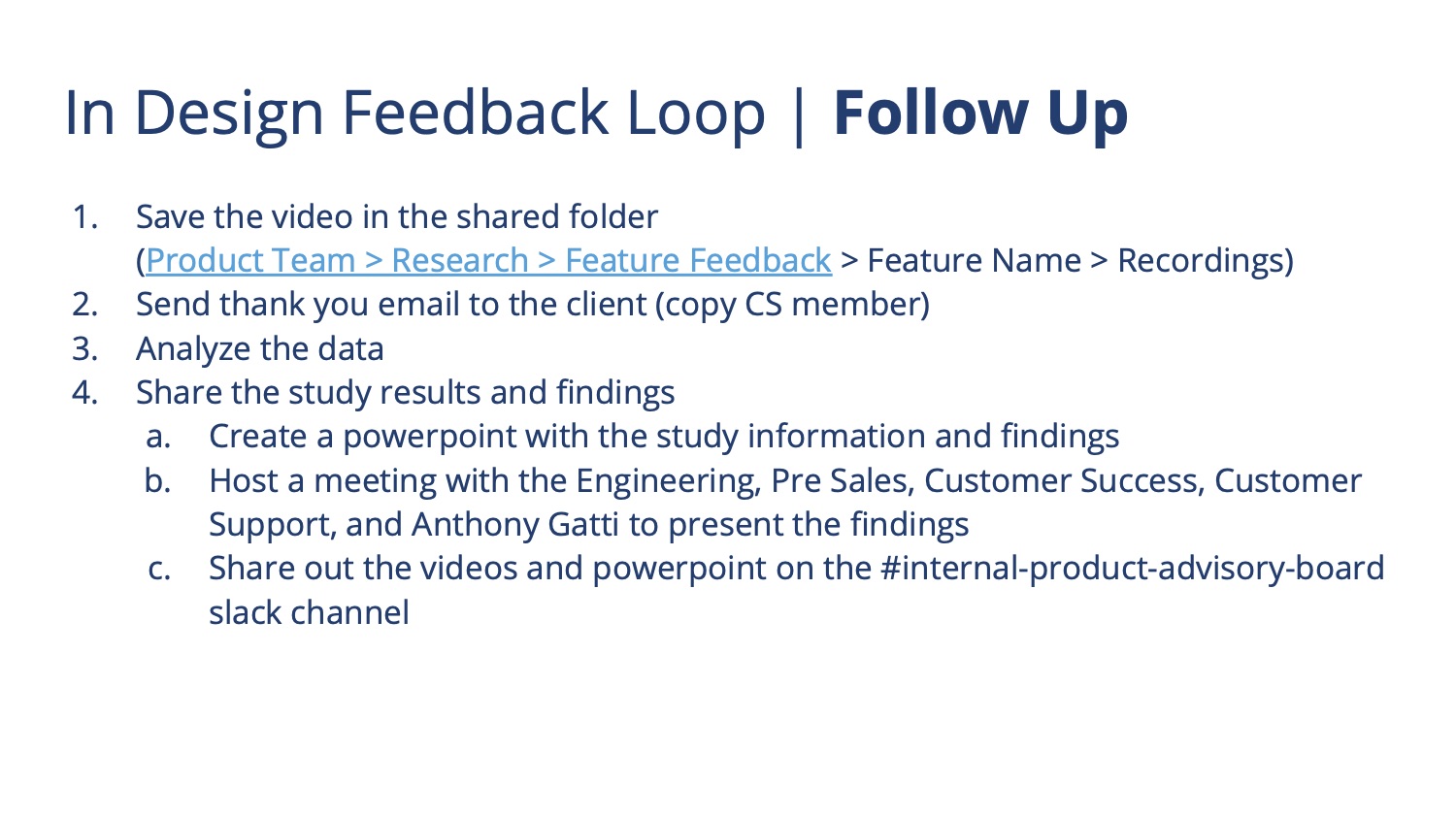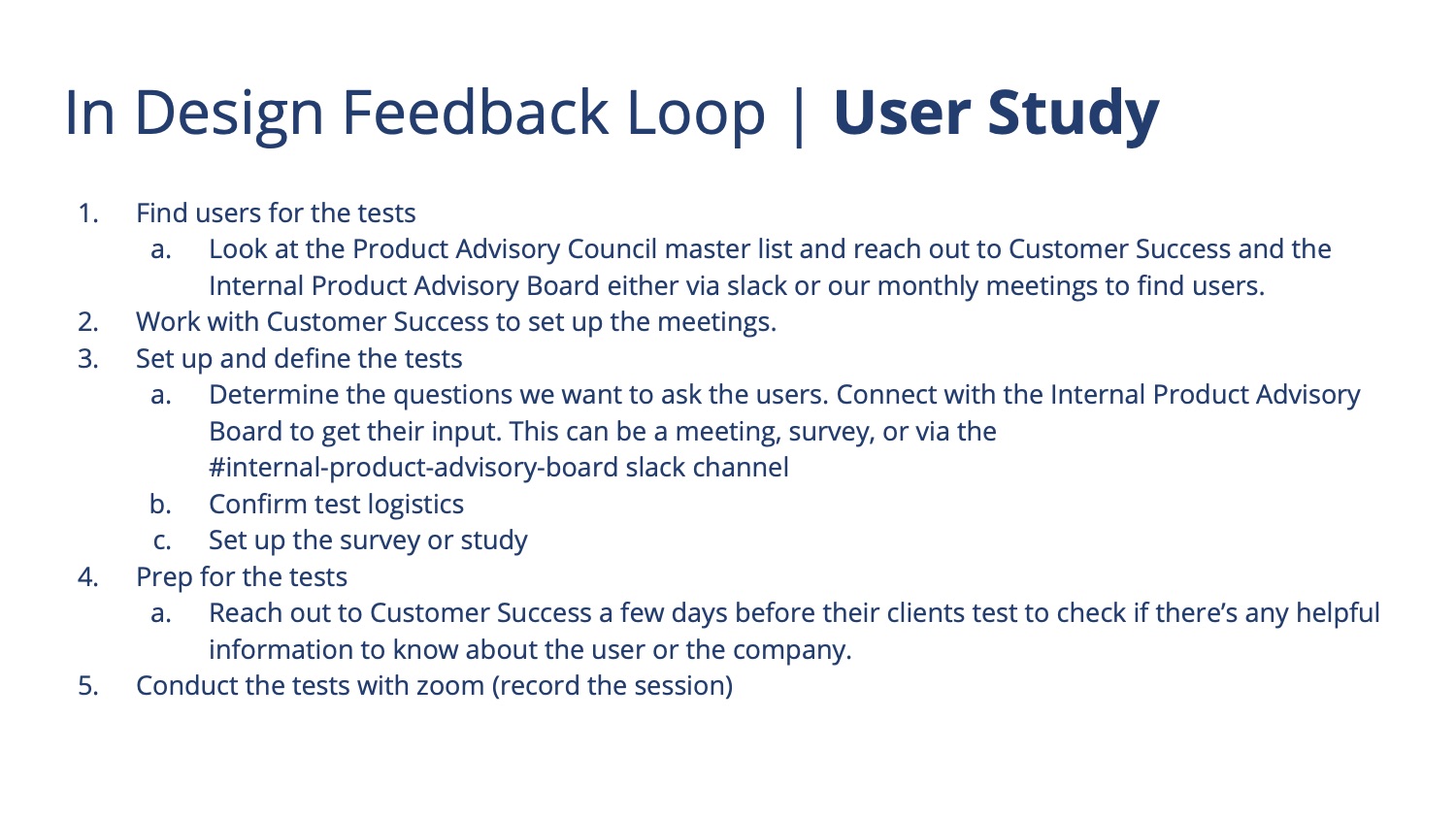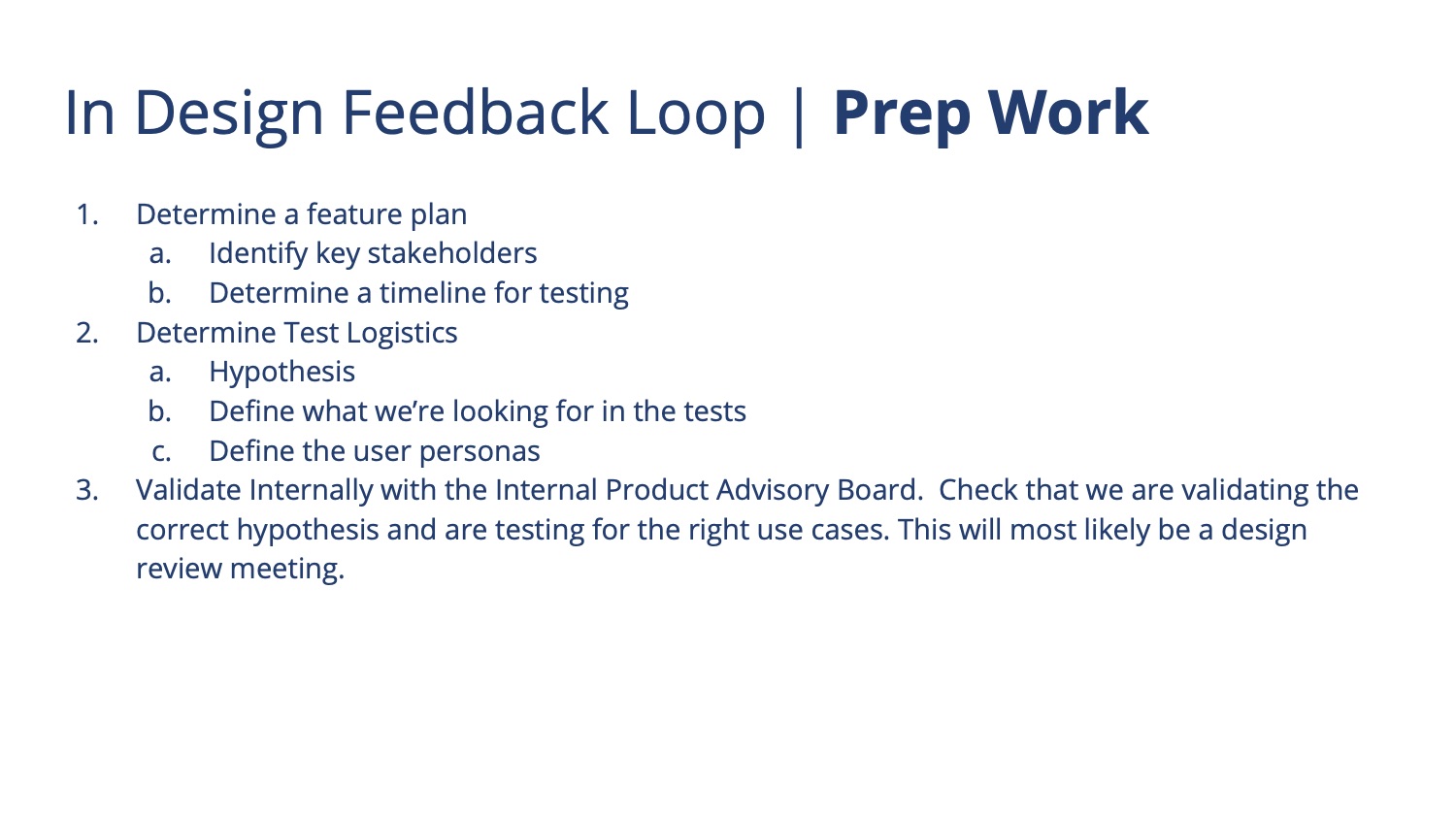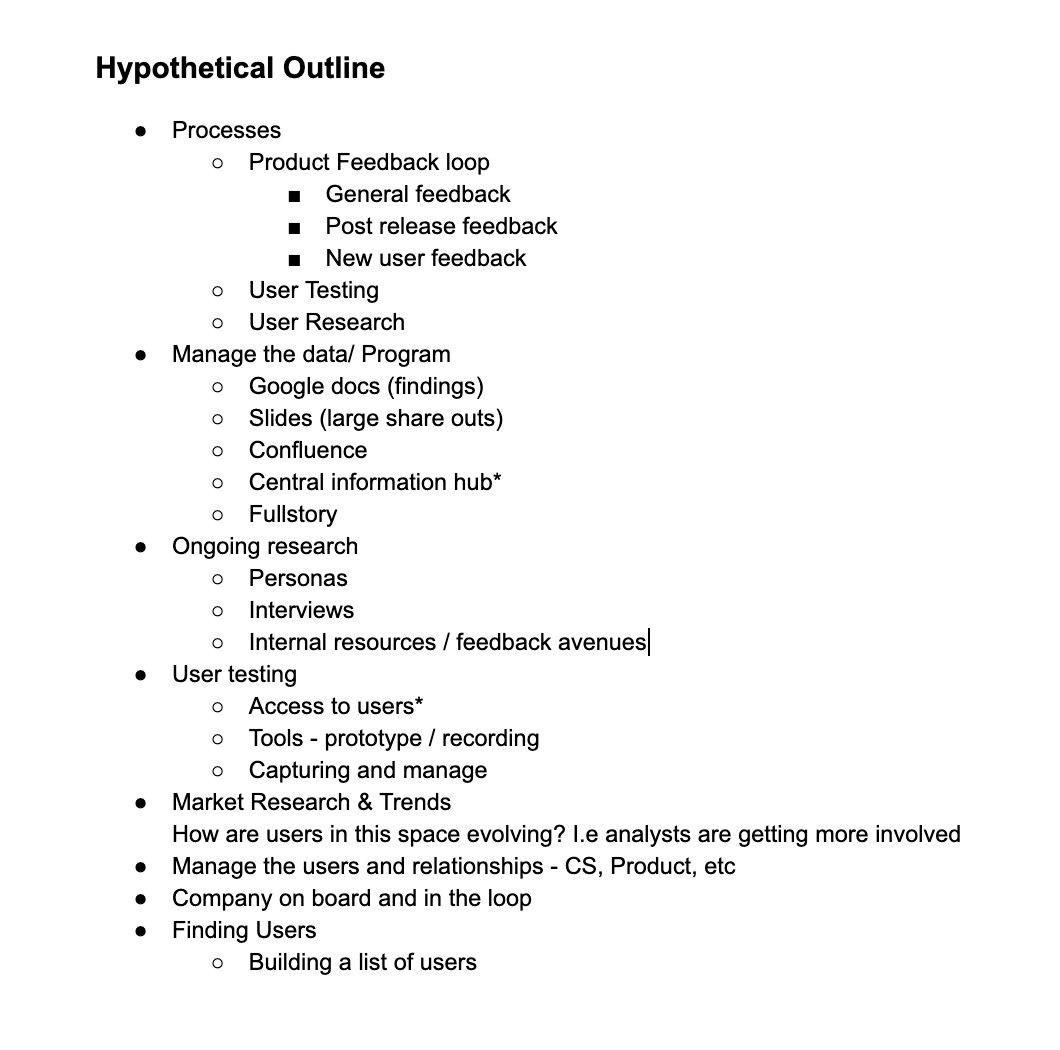UX Research Program
STREAMSETS
Project Description
The Company: StreamSets is a B2B DataOps platform that enables businesses to quickly transport continuous data with quality so they can confidently use their data.
Problem: Their product has a great market fit and is very powerful, but it has poor usability. Clients and prospects were complaining about the usability which was negatively affecting sales and client retention. The UX Research program was one tool to help the team improve usability by understanding their users and testing features.
StreamSets had just started to build out their UX and Product Teams. I was the second UX hire behind my manager, the UX Lead. I was hired to create a UX Research program, implement the first user research study and then train a new UX researcher on the program while I transition my responsibilities to 50% research 50% design. The UX Lead and Product Management team had started to create elements of the program which gave me a solid jumping off point. This program was meant to be a collaboration, and my role was to organize and facilitate the program while others spearheaded certain aspects of the program.
Impact StreamSets was able to efficiently incorporate the user into the design process. With the process already in place, the team was able to efficiently find users for user studies, create user studies, and gain valuable user feedback from those studies. This improved the usability and my assumption will increase sales and client retention.
My Role
Lead UX Researcher
The Team
UX Team (Myself and the UX Lead), Product Manager, and Customer Successs Team
Methods
Program Development, Organization, Presenting.
Tools
Google Docs, Zoom
The Story
Define Goals & Set a Hypothetical Outline
I reported to and worked closely with the UX Lead. We discussed the goals of the program and from there I created a hypothetical program outline. The outline was based on my past experience and industry knowledge.
Program Goals
- Use data to understand and empathize our users on an ongoing basis
- Use data to test and validate designs and ideas
- Create a feedback and user centered culture by sharing out the findings
Step 2 | Understand
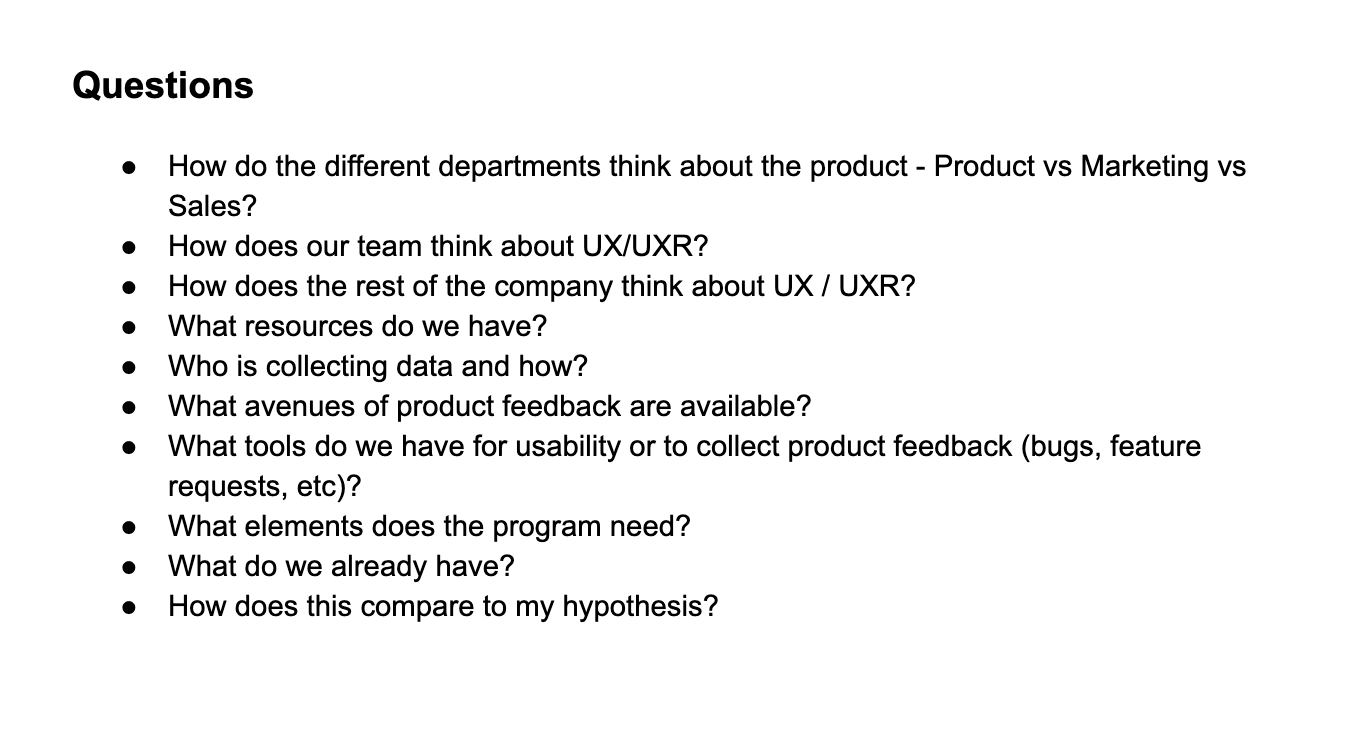
Click Image to enhance
Prepare
I created a list of everyone who talks to the clients and / or works on the product team and then I created a list of questions that would help me develop the program outline.
What the UX Lead Had In Place
The most influential person was my manager, the UX Lead, who I worked closely with on this project. We were collaborating to develop the UX team and we had many conversations about the program. Through our conversations I discovered the answers to many of my questions.
He had already established personas, the product design process minus the research portion, and has a few methods for feedback loops. He had established relationships with most of the stakeholders and knew that everyone values user research and understands the need. This is crucial to establishing a program because if everyone is on the same page then it is one less thing to do. User research at a small B2B startup is a whole company deal if you want to optimize your resources and be efficient in getting user feedback, fast design iterations, and quicker product implementation. If people see the need and value then they are willing to help which includes participating in the feedback loops.
Meet with Stakeholders & Establish Relationships
For the rest of the stakeholders, I set up 30 minute meetings with each of them. My specific goals for these calls were the following:
- Establish a relationship
- Understand how they currently interact with their clients i.e Identify their interactions or touch points with the clients and the client's known pain points
- Identify any current feedback loops or opportunities for feedback loops
- Identify any users who were willing to participate in research or had in the past
Meeting Results
The meetings were very fruitful and had successfully established relationships with the stakeholders whom I would need their cooperation to connect with users and strengthen feedback loops.
Everyone was excited about the program and getting the user involved. Usability affected all of their jobs and goals, which was helpful for me as I would cooperate with this program. I compiled the data with these three main takeaways:
- Had several lists of potential power users and many of whom the manager could send an introduction.
- Discovered existing feedback loops. For example JIRA is used for support tickets and user pain points, while Product Board is used for feature requests.
- I was invited to the Customer Success Team’s recurring meetings to hear discussions about client and user health, use cases, and to establish a consistent touch point with the team.
Step 3 | Outline
Outline the Program and Identify What Needs to be Done
Using the information I gathered from the stakeholders I created an outline of the StreamSets UX Research program and highlighted what I needed to create.
What is Already Established
- Ongoing research
- Personas
- Interviews
- Personas
- Internal resources / feedback avenues
- Market Research & Trends
- Competitive analysis
- Storyboarding
- Journey Maps
What Needs to be Established
- Program Management
- Data management
- Communicate with the Company and Share the findings
- Data management
- User Research / Testing
- Process
- Tools (prototype / recording)
- Process
- External User Group
- Access to users*
- Finding Users & Building a list of users
- Manage the users and relationships - CS, Product, etc
- Access to users*
- Product Feedback loop
- Internal user group & feedback loop
Step 4 | Program Mangement
Program Management
Data management: I established and managed everything in a shared Google Team Drive. I created a UX Research folder with subfolders. This worked for me in the past and the company uses Google Drive effectively so it was a simple solution.
Company on board and in the loop: The team and I decided to create a powerpoint presentation for every study to share out with the company and to work up to sharing an email or correspondence about UXR every week. This will keep the company updated on the value of the user research and updated on valuable user insights and product updates.
Step 5 |
User Study
User Research & Testing Process
Process: While I was creating this program I was also responsible for implementing our first user study, the Connection Catalog feature validation study. This study was a guinea pig or test to the user research process.
Step 4 |
User Group
Developing the External User group
We called this group the Product Advisory Council AKA PAC. I established the group parameters or outline or protocol. To do this I answered the following questions:
- Who should be in this group?
- What is this group and what does it entail?
- Why are we developing this group?
- Where will this group meet?
- How does one join?
I created a PAC user list in google sheets to hold the names of the users in the group with their important user info. At first this list was filled with all the potential users. I reached out to Customer Success, Customer Support, and the Sales Teams to add any users that they knew would be interested in the group. The teams and I were able to get over 60 names which surpassed the goal of 50. To manage this list I would review the list with the Customer Success team on a regular basis.
Step 4 | Internal
User Group
Don't Force Unnecessary Process
The team wanted an internal user group to help generate internal feedback because the employees worked closely with the users and had valuable perspectives.
I was in the process of developing one, but discovered that we didn’t fully understand how these internal users would be helpful in this group format. The UX Team was already reaching out to them through other avenues as part of the research process and it wasn't clear what this specific group would add. It was a case where it sounded more functional that it might be.
The plan changed to put this on hold, see how the process goes without designated internal users for feedback, and then re-evaluate whether or not we need a group. If there's a need then we'll create one.
Completed UX Research Program
Scroll through to see the whole program
